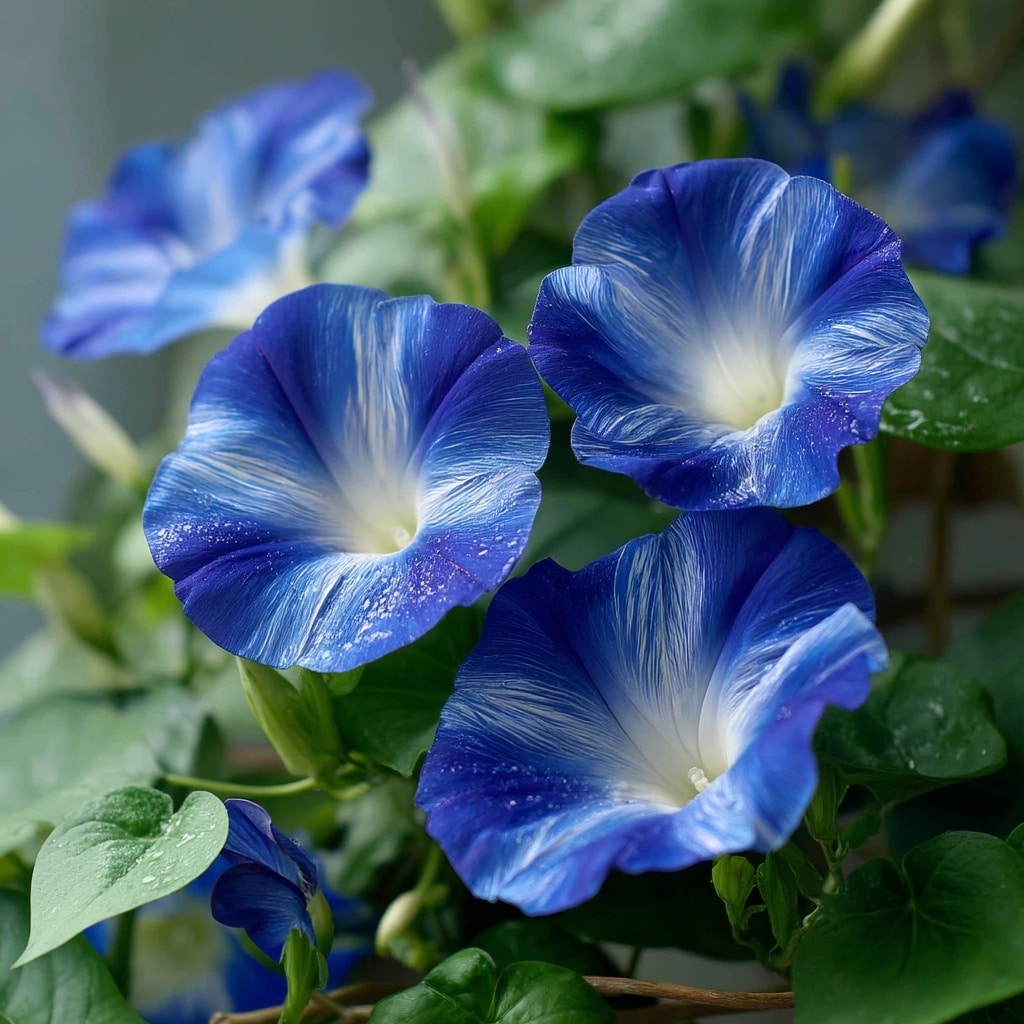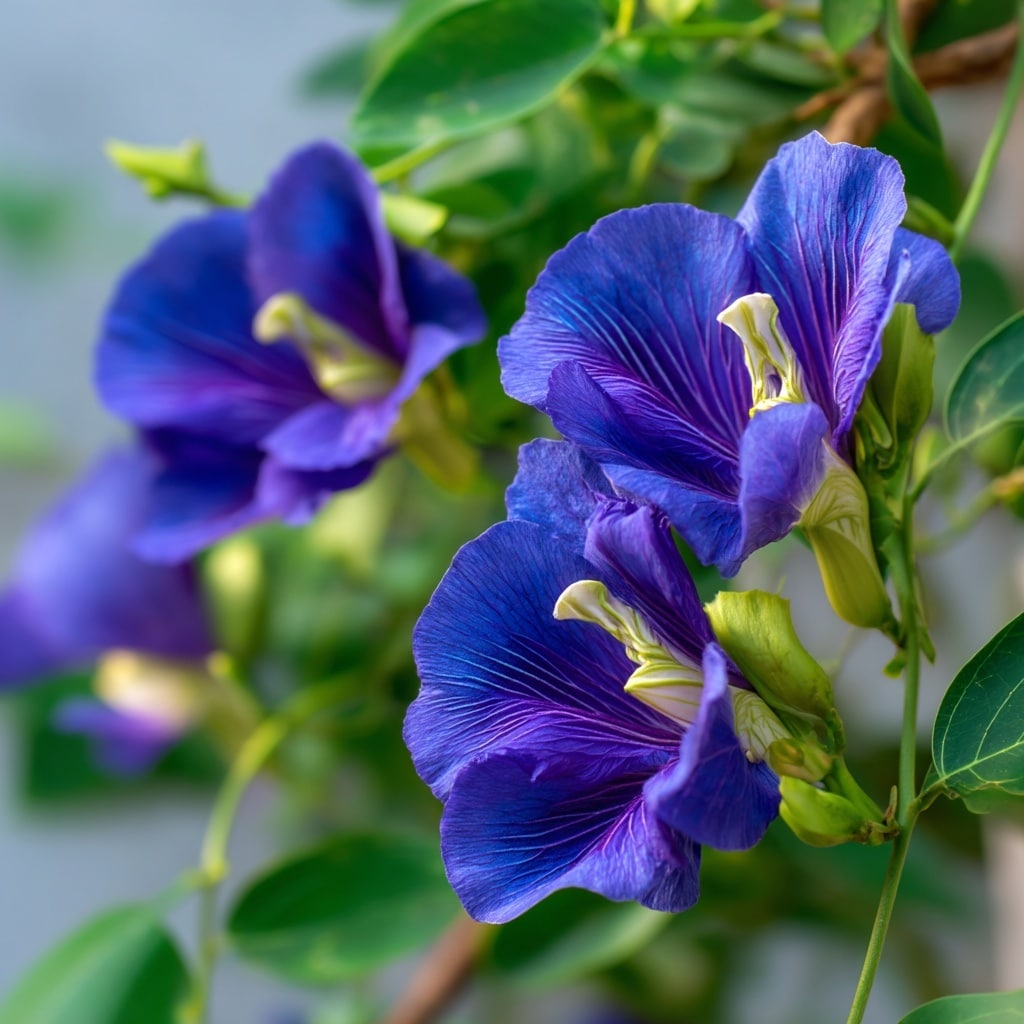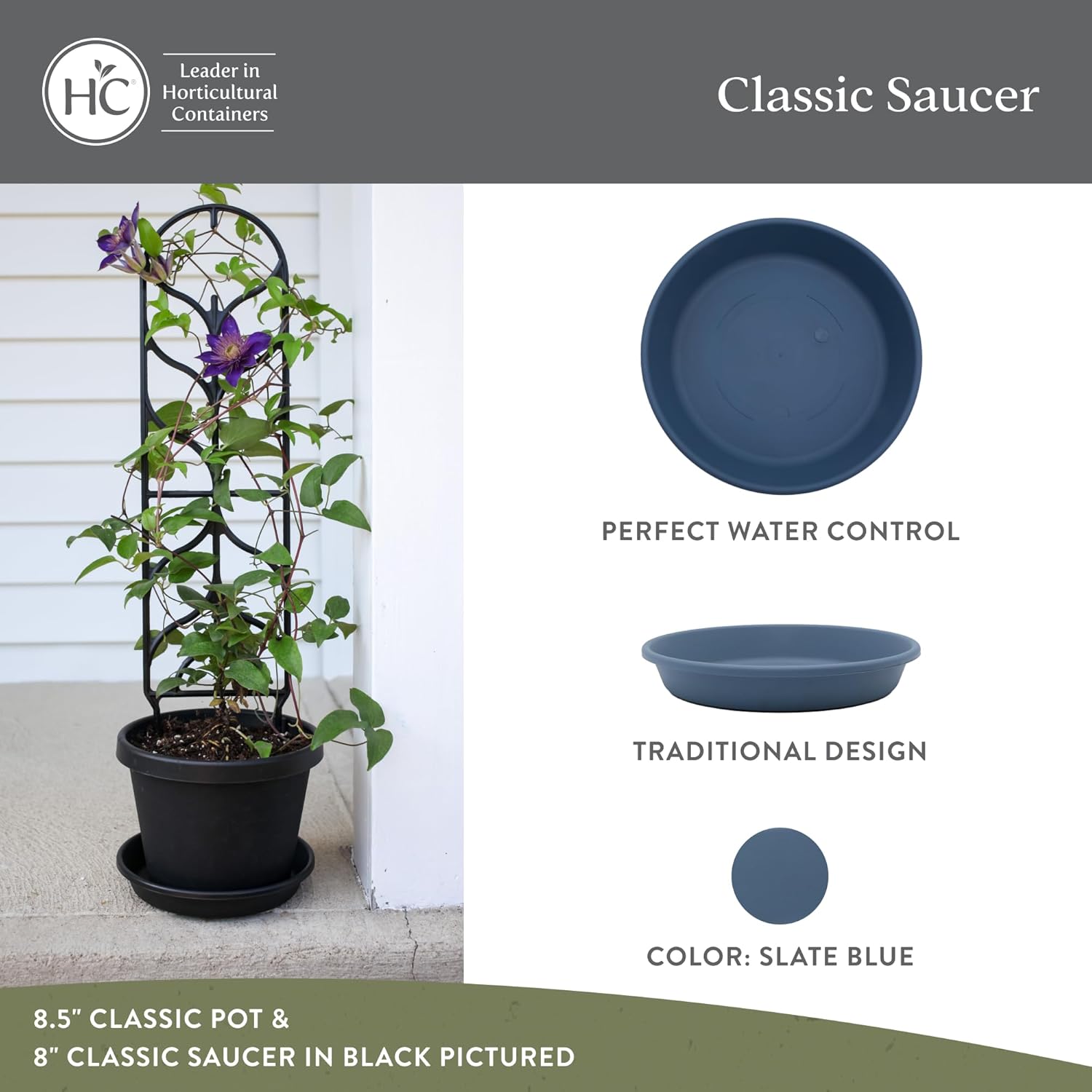Blue flowers bring a sense of calm and cool elegance to any garden space, especially when tucked into cozy balconies or bright windowsills. While red, yellow, and orange blooms are easy to find, blue flowers for balcony gardens offer something rare—a splash of serenity that stands out without overpowering.
Many gardeners believe blue blooms are hard to come by, but the truth is, there are several stunning varieties that are not only beautiful but also easy to grow at home. Whether you’re a seasoned urban gardener or just starting with a few pots, these flowers can thrive with minimal effort and bring year-round charm to your space.
In this article, you’ll discover five types of blue flowers that anyone can grow—even in small spaces. These plants are perfect for container gardening, respond well to regular care, and offer eye-catching blooms that will make your balcony the envy of your neighborhood.
Table of Contents
1. Aparajita (Clitoria ternatea)
If you’re looking to add striking blue flowers to your balcony garden, Aparajita—also known as butterfly pea or Shankhpushpi—is a must-have. This vibrant climber produces deep royal blue blooms shaped like an inverted conch shell, making it as unique as it is beautiful.
Native to Asia, Aparajita is a low-maintenance plant that does exceptionally well in containers. It comes in several color variations, but the royal blue variety remains the favorite among gardeners for its visual appeal and cultural significance—it’s even considered sacred in many Indian traditions.
Growing Tips:
- Light: Thrives in full sun
- Soil: Prefers well-draining potting mix
- Watering: Regular watering, but avoid waterlogging
- Fertilizer: Organic compost or used tea leaves every few weeks
- Season: Blooms from spring through autumn
After flowering, the plant goes dormant during winter. At that stage, cut it back hard to encourage vigorous growth when spring returns. With regular deadheading (removal of spent flowers), Aparajita will reward you with continuous blooms all season long.
This plant is ideal for trellises, railing pots, or even hanging baskets—adding vertical interest and lush greenery to your space along with its lovely blue flowers.
2. Morning Glory (Ipomoea purpurea)
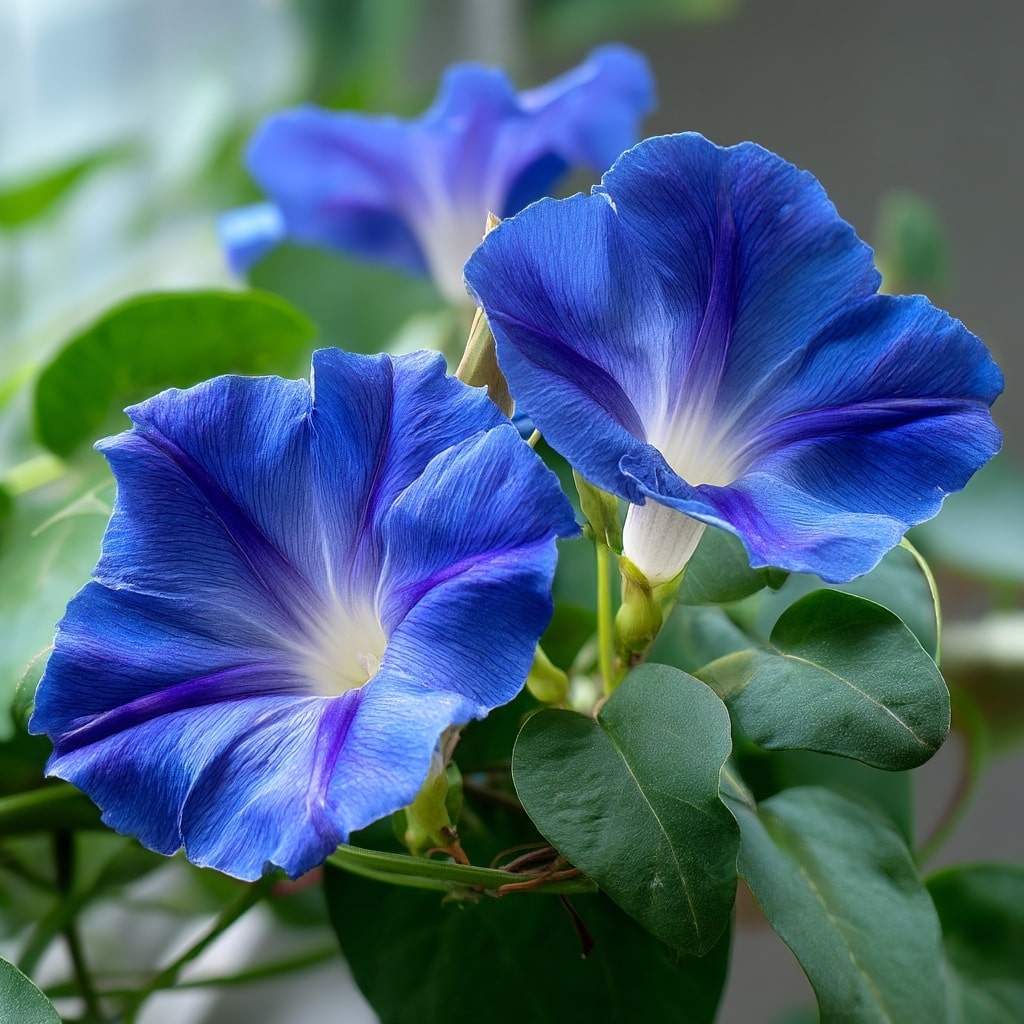
Few blue flowers can match the charm and cheer of Morning Glory. With its trumpet-shaped blooms and soft, heart-shaped leaves, this climber offers a dazzling display every morning as the flowers unfurl with the sunrise—hence the name.
The most popular variety for balcony gardens is Ipomoea purpurea, which features rich royal blue petals with subtle white veining. Not only are they visually captivating, but they’re also incredibly easy to grow from seed, making them a favorite among beginner and seasoned gardeners alike.
Growing Tips:
- Light: Full sun is essential for abundant flowering
- Soil: Well-drained and moderately fertile
- Watering: Keep soil moist but not soggy
- Sowing Time: Best sown in late autumn to early winter (November–February)
- Support: Needs a trellis, railing, or vertical structure to climb
To maintain a fresh flush of blue flowers, be diligent with deadheading. This will prevent the plant from going to seed too early and will encourage prolonged blooming. Morning Glory can grow rapidly and even become invasive if left unchecked, so regular pruning may be necessary.
Its bold blue blooms offer a lively contrast against the greenery and are ideal for softening balconies, creating privacy screens, or simply adding some movement and life to your vertical space.
3. Plumbago (Plumbago auriculata)
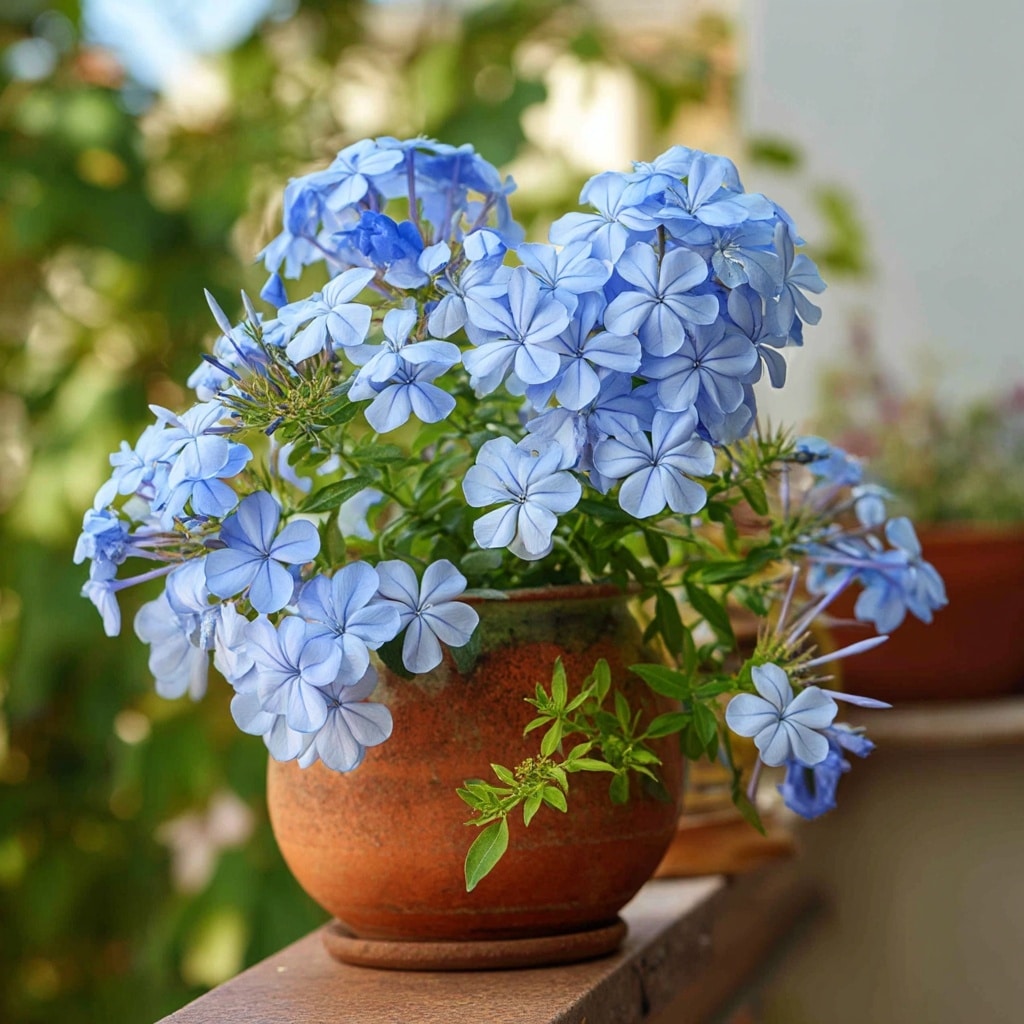
If you’re after a graceful, shrub-like plant that produces clusters of soft blue flowers, Plumbago is a brilliant choice. Sometimes called Cape Leadwort, this sun-loving plant features delicate, sky-blue blooms that resemble tiny five-petaled stars.
Perfect for balcony containers or sunny corners of your garden, Plumbago auriculata adds a touch of lightness and texture to your space. The flower clusters often look like mini hydrangeas, blooming profusely during spring and early autumn. Even when not in bloom, its foliage remains lush and attractive.
Growing Tips:
- Light: Full sun to partial shade
- Soil: Well-drained, sandy or loamy soil
- Watering: Moderate; water when the top inch of soil dries
- Feeding: Monthly with balanced liquid fertilizer
- Season: Blooms in cooler seasons—spring and post-monsoon
Plumbago is a hardy and forgiving plant, ideal for busy gardeners. It does, however, tend to go dormant in peak summer, especially in hotter climates. Regular pruning will help maintain its shape and encourage fuller growth when flowering resumes.
Its soft blue flowers create a soothing backdrop, blending effortlessly with other balcony blooms or standing out on their own in minimalist pots.
4. Pansy (Viola x wittrockiana)
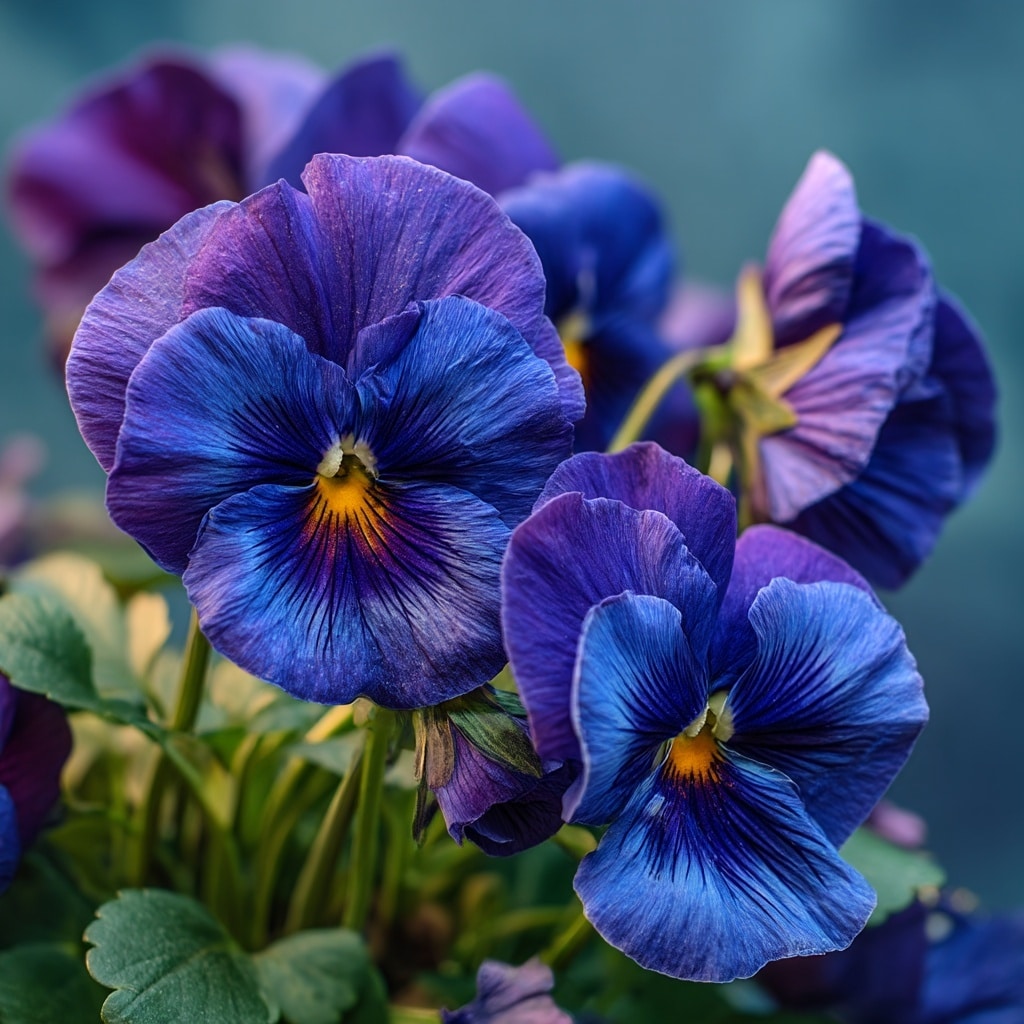
When it comes to cheerful, expressive blue flowers that thrive in cool weather, few can rival the lovable Pansy. Known for their “faces” and velvety petals, pansies come in a wide range of colors—including stunning shades of deep blue, purple-blue, and indigo.
Part of the violet family, these compact plants are perfect for balcony gardens, especially in winter months. They add a splash of color when many other plants are resting, and their low-growing habit makes them ideal for borders, pots, or hanging containers.
Growing Tips:
- Light: Full sun to partial shade
- Soil: Rich, well-draining soil enriched with compost
- Watering: Keep evenly moist; avoid waterlogging
- Fertilizer: Use a phosphorus-rich mix to promote blooming
- Season: Best grown during winter (October to March in most climates)
Pansies can be tricky to grow from seed, so buying young nursery plants is often the easiest route. With consistent deadheading, they’ll bloom profusely and stay compact, preventing legginess. In warmer regions, partial shade can extend their blooming season into early spring.
For balcony gardeners who love vibrant yet low-maintenance blue flowers, pansies are an ideal pick. They’re also kid-friendly and pet-safe, making them a family favorite.
5. Petunia
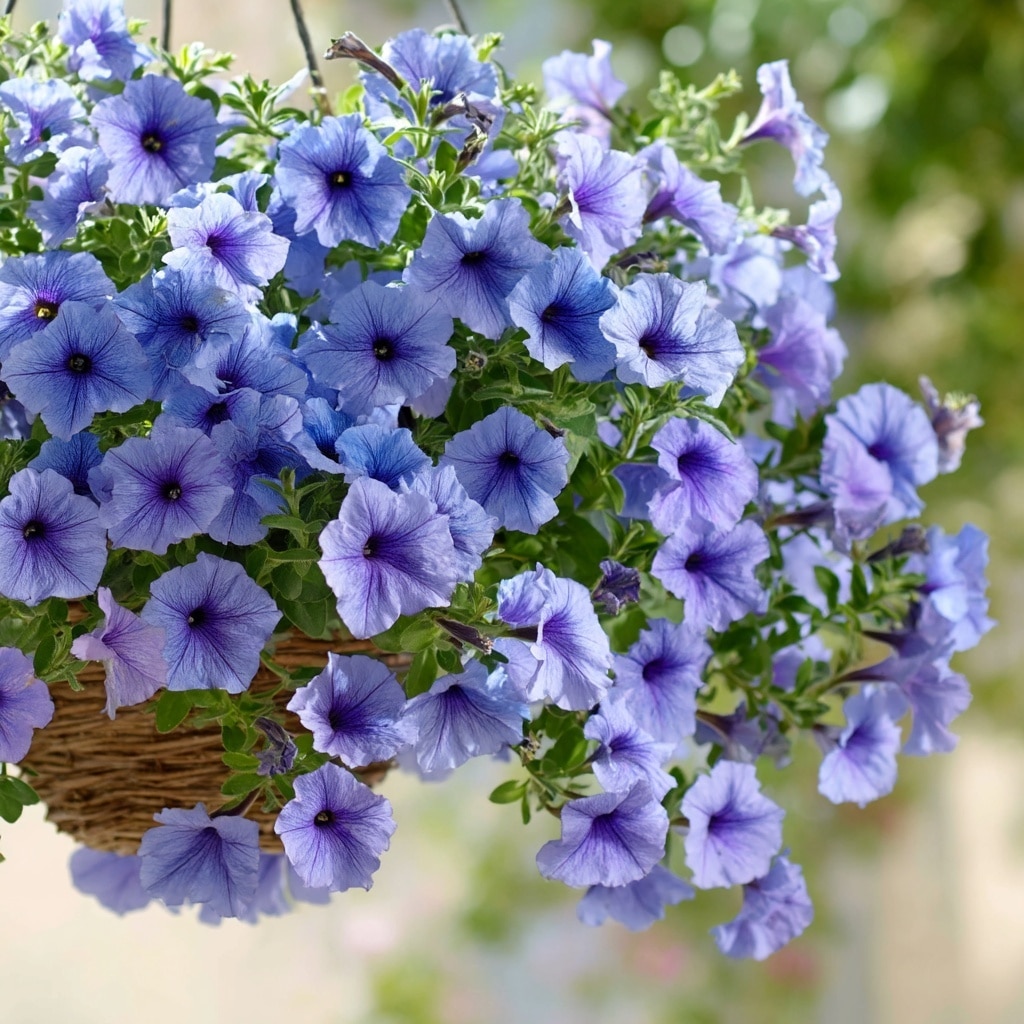
If you’re looking for bold, blooming blue flowers that cascade beautifully from pots or hanging baskets, Petunia is your go-to plant. While Petunias come in many vibrant shades, the blue and purple-hued varieties are particularly striking—especially in balcony gardens where space is limited but impact matters.
Petunias are known for their trumpet-shaped blooms and delicate, sometimes ruffled edges. They’re fast growers, bloom generously, and respond well to regular care—making them a favorite among balcony gardeners and urban growers alike.
Growing Tips:
- Light: Requires full sun for abundant flowering
- Soil: Well-drained, loose potting mix
- Watering: Moderate—keep soil moist but never soggy
- Feeding: Feed every 2 weeks with a flowering plant fertilizer
- Season: Best grown in cooler months alongside pansies (October to March)
When selecting Petunias at the nursery, opt for short, bushy plants that haven’t started flowering yet—they’ll adapt better and flower more vigorously once planted. Regular deadheading is essential to keep the plant blooming continuously and to avoid legginess.
Whether trailing from a hanging basket or filling up a window box, Petunias deliver rich color, soft textures, and a steady stream of blooms. Their blue flowers add a dramatic flair, making your balcony look lush and lively all season long.
Honourable Mentions
While the previous five plants are ideal for small spaces and balcony gardens, there are several other blue flowers worth considering—especially if you have access to a larger yard or live in a cooler climate. These blooms are either less common, tree-sized, or climate-specific, but they bring unique beauty wherever they grow.
Jacaranda (Neel Mohar)
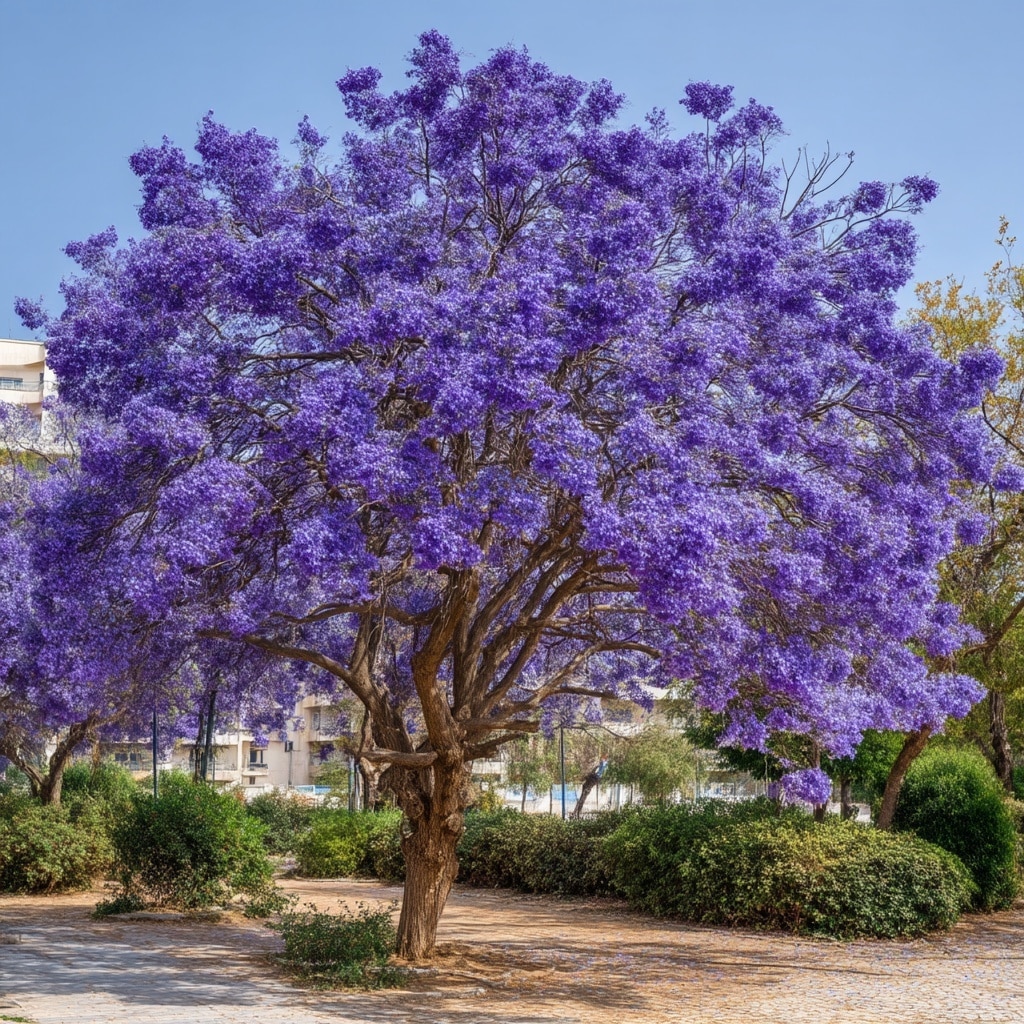
A stunning tree that bursts into clusters of blue-violet blooms in spring and summer. Though not suitable for balconies, it’s a showstopper in larger gardens. Native to Brazil, Jacaranda thrives in Indian climates and prefers dry conditions—too much water encourages leafy growth instead of flowering.
Jarul (Giant Crape Myrtle / Pride of India)
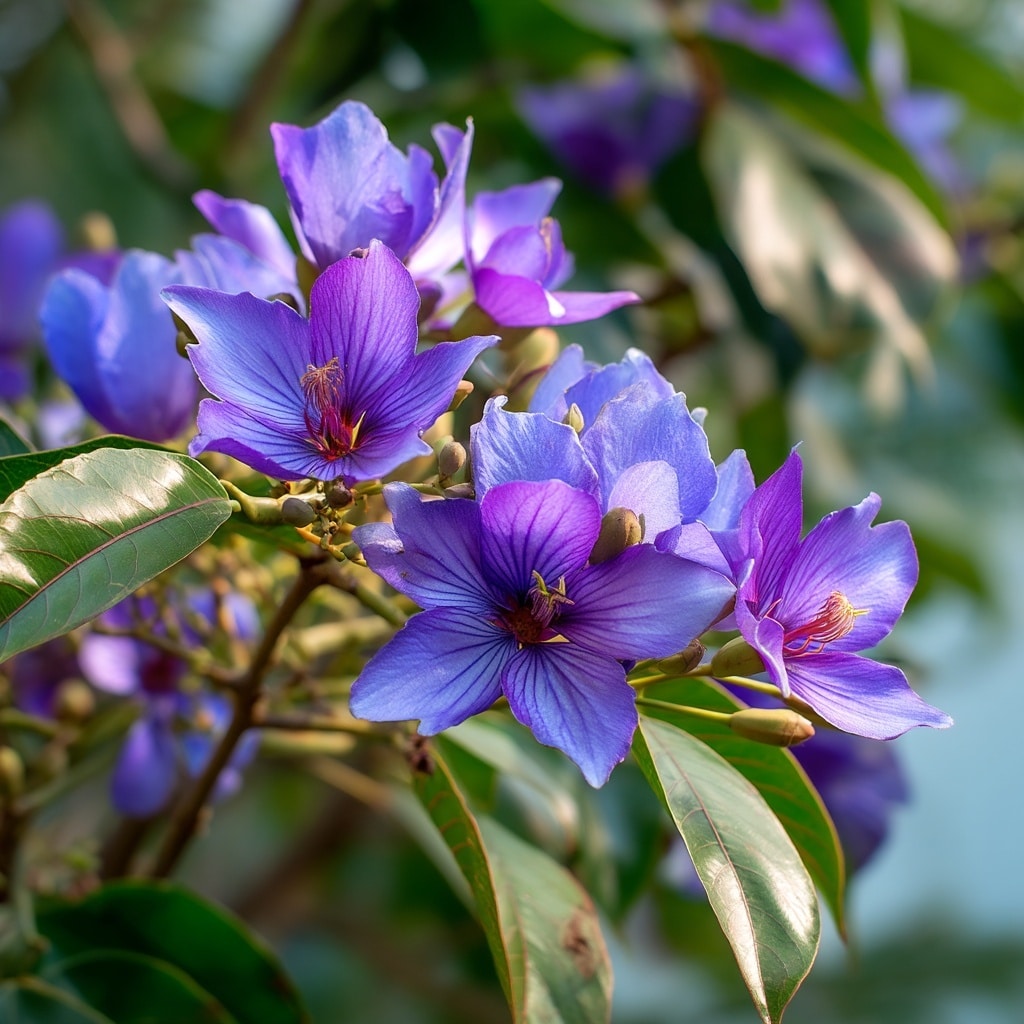
Native to South Asia, Jarul is a tree that produces soft bluish-purple flowers that gradually fade to pink. It requires full sun and regular watering during the early growth phase. A favorite in public parks and large yards, its star-shaped blooms are a local treasure.
Blue Hibiscus (Hibiscus syriacus / Alyogyne huegelii)

Though not a “true blue,” this bluish-purple flower mimics the look of a classic hibiscus. It grows well in full sun, needs regular pruning, and thrives in alkaline, well-drained soil. Great for large containers or garden beds with enough sunlight.
Blue Water Lily (Nymphaea nouchali)
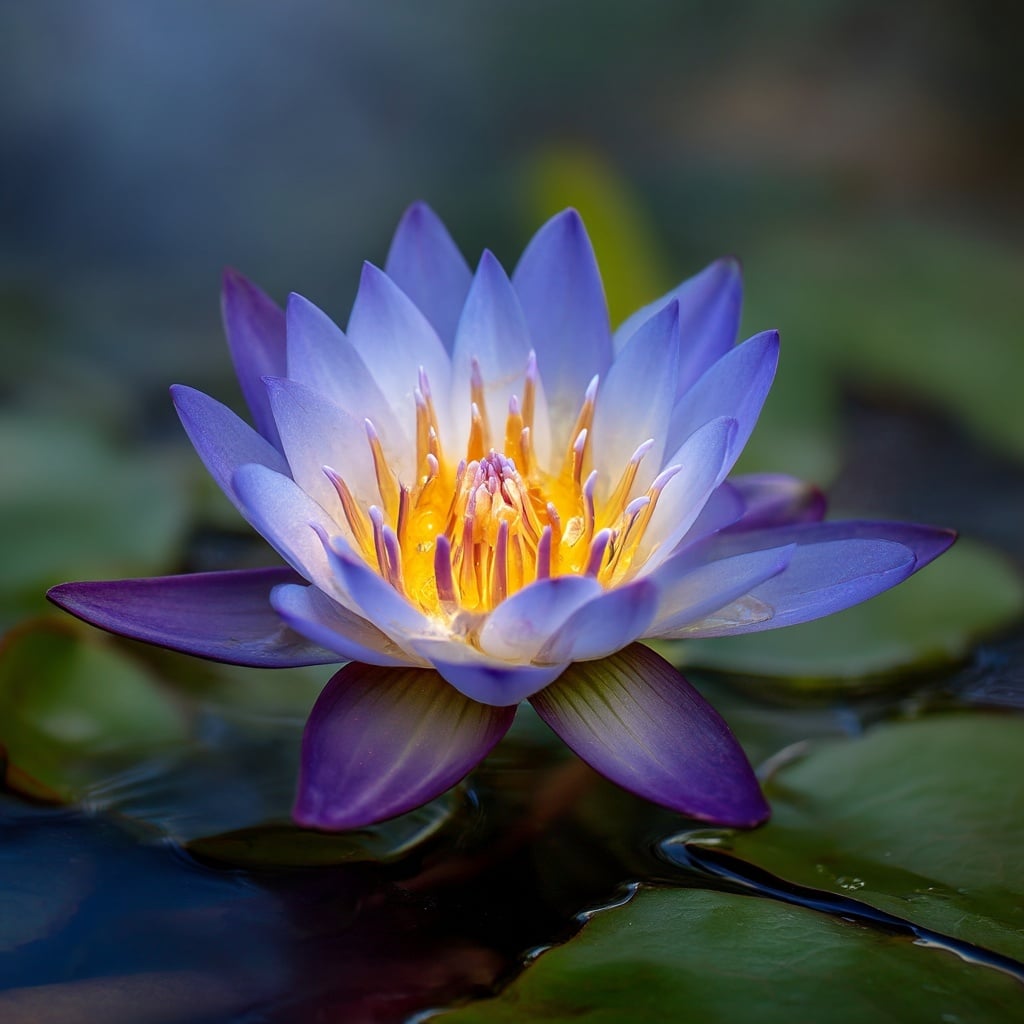
Also known as Neel Kamal, this aquatic flower holds deep cultural and mythological significance in India. Best grown in tubs or shallow ponds, it adds a striking, serene presence with petals that fade from rich blue to glowing yellow at the center.
Himalayan Blue Poppy (Meconopsis grandis)
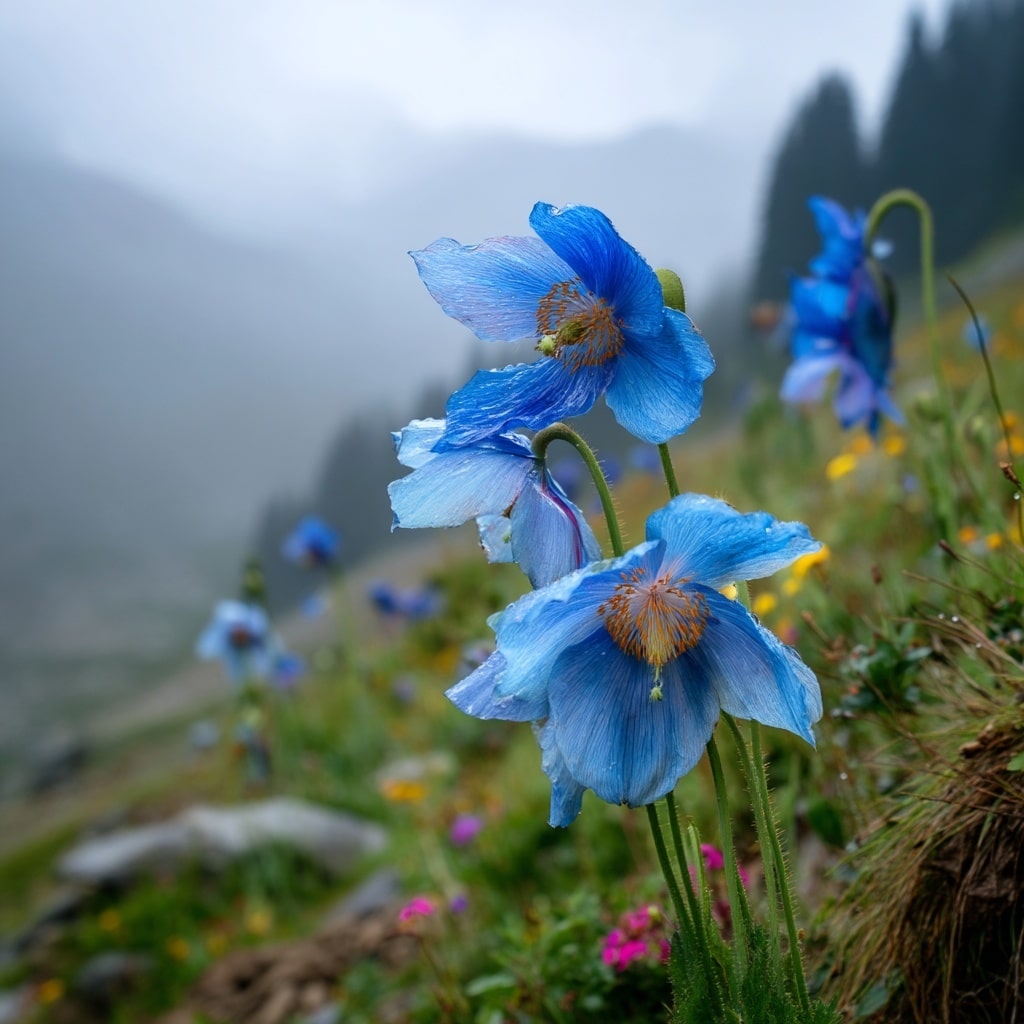
A rare and elusive beauty, this pastel blue flower is suited only to cool, alpine climates. Found in Himalayan regions like Hemkund Sahib and the Valley of Flowers, it’s challenging to grow elsewhere but stunning in the right conditions.
These honorable mentions may not fit into every balcony garden, but they’re perfect for gardeners who want to explore new plant varieties or expand into larger garden spaces over time. Each offers a different shade and form of blue flowers, showcasing the diversity this color can bring to a garden.
Conclusion
Whether you’re working with a sprawling yard or a modest balcony, blue flowers can transform your garden into a peaceful, refreshing retreat. From the hardy Aparajita to the vibrant Petunia, these plants bring both beauty and ease of care to your growing space.
While true blue blooms are rarer in nature, the varieties highlighted above prove that with the right selection, you can enjoy shades of blue throughout much of the year—even in small containers. By choosing the right plants for your space and climate, maintaining a healthy watering and pruning routine, and giving them just enough sunlight, your balcony garden can become a calming sea of blue.
So go ahead—add some sky-hued charm to your garden and let your space bloom in cool, enchanting color.

